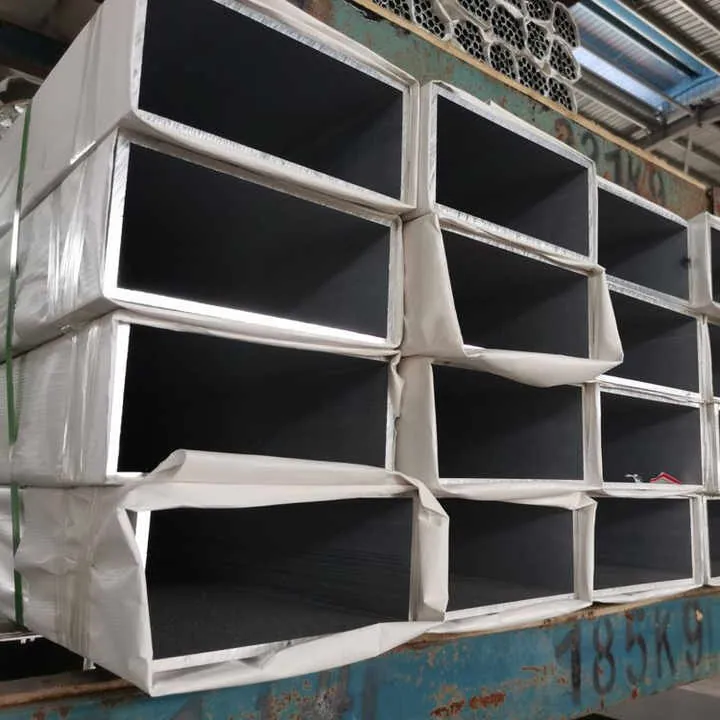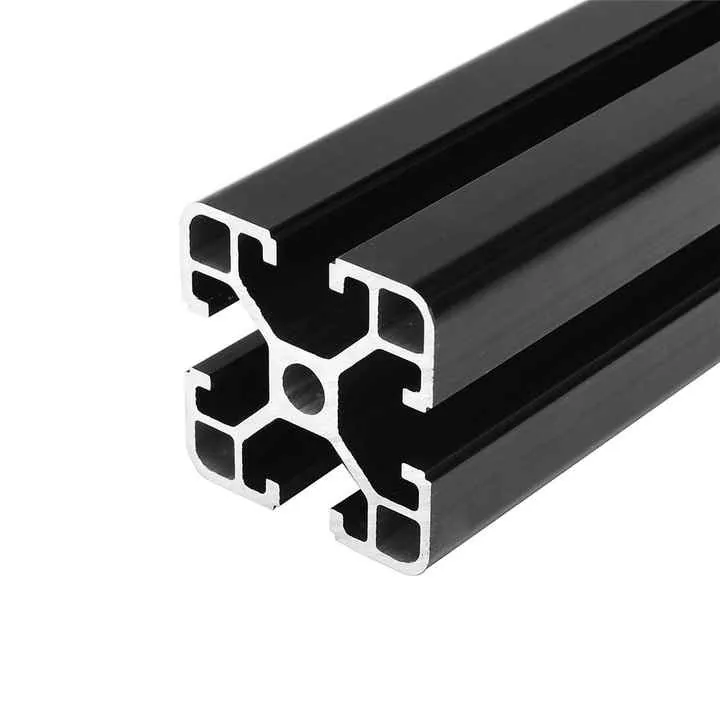Melyek a különböző alumínium extrudálási profilok?

I used to think aluminum extrusions only came in simple bars. Then I saw how many profile shapes existed—it blew my mind. (Max 30 words)
Aluminum extrusions come in many standard and custom profiles, including solid, hollow, and semi-hollow shapes. Each profile serves a different purpose based on its design. (Max 50 words)
Many people don’t realize how diverse aluminum profiles can be. Let’s explore the full range of options and how to choose them.
What standard extrusion shapes are available?
Every time I visited a factory warehouse, I saw racks of similar-looking extrusions. I wondered what basic shapes they always stocked. (Max 30 words)
Standard aluminum extrusion shapes include bars, tubes, angles, channels, and tees. These are pre-designed and widely available from most suppliers. (Max 50 words)

Standard aluminum extrusions are the starting point for many projects. These shapes are produced in large quantities and are easy to source. Common options include round tubes, square tubes, flat bars, L-shaped angles, and U-channels.
Common Standard Shapes
| Profil típusa | Leírás | Közös felhasználások |
|---|---|---|
| Flat Bar | Rectangular solid bar | Bracing, framing, fixtures |
| Square Tube | Hollow square profile | Structural, lightweight frames |
| Angle (L) | L-shaped solid or hollow | Edge protection, corners |
| Channel (U) | U-shaped profile | Track systems, guides |
| Tee (T) | T-shaped bar | Load-bearing, support |
| Kerek cső | Circular hollow pipe | Piping, tubing, furniture |
| I-Beam | Resembles steel I-beam | High-load structural parts |
Each of these shapes follows a standard sizing system. For example, a square tube may come in 20×20 mm, 30×30 mm, etc. Suppliers can cut them to length or deliver full bars.
Standard profiles are useful because they reduce cost and simplify inventory. You don’t need custom dies. I often start prototyping with standard bars, then shift to custom only if necessary.
Standard extrusion shapes include flat bars, square tubes, and U-channels.Igaz
These are common and widely produced shapes.
Standard extrusions are only available as round solid rods.Hamis
They come in many shapes like tubes, channels, and angles.
How are extrusions classified: solid, hollow, semi-hollow?
I once ordered what looked like a tube, but it cost much more than expected. Turns out it was a semi-hollow, not a hollow. (Max 30 words)
Aluminum extrusions are classified as solid, hollow, or semi-hollow based on whether they contain enclosed voids. (Max 50 words)

Extrusions are grouped by their internal structure:
1. Solid Profiles
Solid profiles have no enclosed voids. They include flat bars, angles, tees, I-beams, and Z-shapes.
Előnyök:
- Strong and rigid
- Alacsonyabb szerszámköltség
- Easier to extrude
Példák: L-angle, flat bar, solid rod
2. Hollow Profiles
Hollow profiles have enclosed voids running through them, like pipes or tubes.
Előnyök:
- Könnyűsúlyú
- Allows routing cables or fluids
- Good strength-to-weight ratio
Példák: Round tube, square tube, rectangular hollow
3. Semi-Hollow Profiles
These have partially enclosed voids. The void is not completely sealed.
Előnyök:
- Combine strength and weight savings
- More complex structure
Példák: C-channels with narrow gaps, keyhole slots
Table: Extrusion Class Types
| Osztályozás | Leírás | Sample Shape |
|---|---|---|
| Szilárd | No voids | Flat bar, angle |
| Hollow | Fully enclosed voids | Négyszögletes cső |
| Semi-Hollow | Partial openings | Slot channel |
Each class affects cost, complexity, and weight. Solid extrusions are simpler and cheaper. Hollow needs bridge dies and more control. Semi-hollow falls in between. For me, understanding this helped avoid misorders and budget surprises.
Hollow profiles have fully enclosed voids and are lighter than solid profiles.Igaz
Hollow designs remove material, reducing weight.
Semi-hollow extrusions are always cheaper than solid ones.Hamis
They often require more complex dies, raising cost.
What are common profile cross-sections: T, U, channel, angle?
I saw an extrusion shaped like a ‘Z’ and wondered if these profiles had names or categories. (Max 30 words)
Common cross-sections in aluminum extrusions include T-shapes, U-channels, angles, and Z-shapes. Each is chosen for specific structural or assembly needs. (Max 50 words)

Extruded profiles are often named after the letter they resemble. These include:
T-Shapes
T-profiles look like a capital T. They are used as structural connectors or reinforcements.
Felhasználás:
- Joining two panels
- Supporting cross-sections
U-Channels
These are U-shaped extrusions, also called channels. They are often used for tracks or mounting systems.
Felhasználás:
- Sliding mechanisms
- Cable guides
L-Angles
These have a 90° angle, forming an L. They’re common for corner protection or framing.
Felhasználás:
- Edge bracing
- Corner guards
Z-Profiles
Z-shapes bend in opposite directions, like a "Z". Used in roofing and cladding.
Felhasználás:
- Panel spacers
- Structural stiffeners
Other Common Cross-Sections
| Shape Name | Visual Reference | Tipikus felhasználási eset |
|---|---|---|
| H-Profile | Double vertical walls | Partition frames |
| C-Channel | Similar to U with one side open | Wall mounting |
| I-Beam | Center web with two flanges | Structural supports |
I’ve seen some clients choose these for aesthetics, not just strength. For instance, T-profiles give clean joining lines in furniture or solar frames. U-channels are useful for LED strip holders or wiring channels. Picking the right cross-section can reduce parts and simplify design.
Z-profiles are used mainly for roofing and siding applications.Igaz
Their shape provides spacing and stiffness.
C-channels are always closed on all sides.Hamis
C-channels have an open side.
What specialized or custom profile types exist?
A customer once handed me a sketch of a weird-shaped extrusion and asked, “Can you make this?” That’s when I learned about custom profiles. (Max 30 words)
Specialized or custom aluminum profiles are designed for unique functions, with features like interlocks, grooves, or branding. They solve design problems that standard shapes can’t. (Max 50 words)

Custom profiles start with a sketch or CAD file. The goal is to match the part’s function exactly. For example, in solar panel frames, profiles often have locking lips, screw channels, and drain holes built in. These cannot be made from a standard bar or tube.
Features in Custom Profiles
- Snap-fit connectors
- Sliding rails
- T-slots for bolts
- Integrated cooling fins
- Custom logo embossing
Custom dies cost more upfront. But they pay off in mass production. I helped one client switch from welding parts together to using a custom extrusion with all features in one piece. It saved them 30% in assembly time.
Table: Standard vs Custom Profiles
| Jellemző | Standard profilok | Egyéni profilok |
|---|---|---|
| Tervezési rugalmasság | Limited to catalog shapes | Fully custom |
| Szerszámozási költség | Alacsony | High initial cost |
| Átfutási idő | Immediate | Several weeks |
| Assembly Simplification | Nincs | Often combines multiple parts |
Specialized profiles are also used in electronics. Heat sinks often have deep fins and base holes. LED housing profiles include slots for wires and diffusers. If your project demands high precision or reduced parts, custom is the way to go.
Custom aluminum profiles can include snap fits and screw slots.Igaz
These features are built into the die design.
Custom dies are cheaper than using standard profiles.Hamis
Custom tooling adds cost, though it reduces unit cost in volume.
Következtetés
Aluminum extrusion profiles come in many forms—standard, custom, solid, or hollow. Knowing the differences helps choose the right one for function, cost, and ease of assembly.



